William Morris' Kelmscott Manor
William Morris, the father of the arts and craft movement in the Victorian era and significant influence on Glasgow's Charles Rennie Mackintosh is examined in this article. An Antipodean travel company serving World Travellers since 1983 with small group educational tours for senior couples and mature solo travellers.
19 Jul 22 · 9 mins read
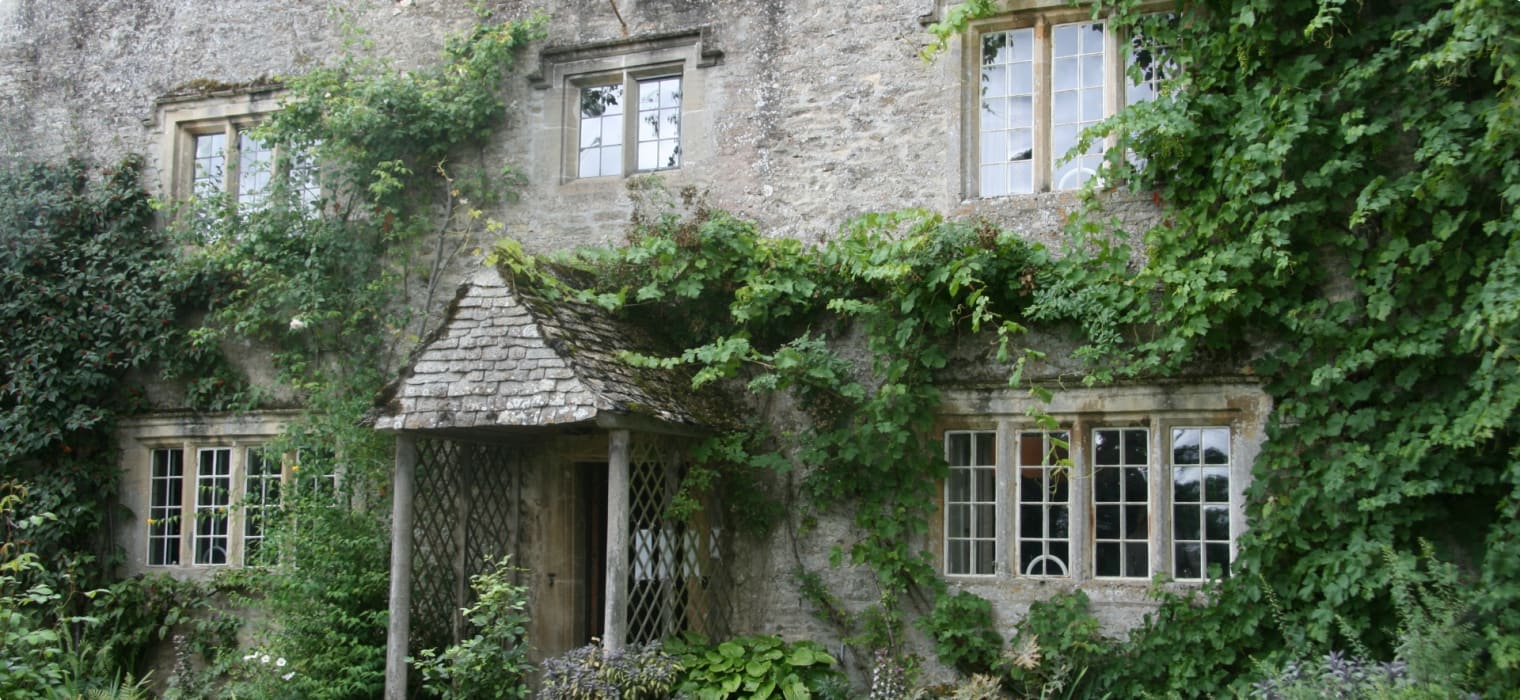
Kelmscott Manor: ‘Heaven on Earth’
Described as ‘heaven on earth’, Kelmscott Manor was beloved by William Morris – the poet, author, architectural conservationist, and social reformer, widely regarded as the founding father of the Arts and Crafts movement. The limestone farmhouse in the English West Oxfordshire village of Kelmscott was Morris’ country home from 1871 until his death in 1896. It was a place from which the artist drew huge inspiration for many of his important writings and designs that are still influential today.
Recently, the Kelmscott house has undergone a major a £6m renovation and been refurbished with many of the possessions of William Morris and the Morris family. William Morris aficionados can pilgrimage here to experience a bewildering array of publicly accessible preserved prints, wallpaper, furniture, carpets, and more.
This article explores the history of Kelmscott Manor and its recent refurbishment as background reading to Odyssey Travellers’ small group holidays to Adelaide and surrounds. William Morris was extremely influential on the Arts and Crafts movement in Adelaide, with the city’s Art Gallery of South Australia hosting the second largest collection of original William Morris & Co pieces in the world (the largest collection is held by the Victoria & Albert Gallery in London). Many of the historic houses in the region are also designed in the fashionable Arts and Crafts style of the time. The article also provides background information for our England’s villages small group history guided tours for mature travellers. These tours journey to Oxfordshire – home to Kelmscott Manor – as well as number of other places such as east Sussex, Gloucestershire, Cotswolds, Yorkshire , Dartmoor Devon and Cornwall, as we explore different eras across a variety of beautiful landscapes. 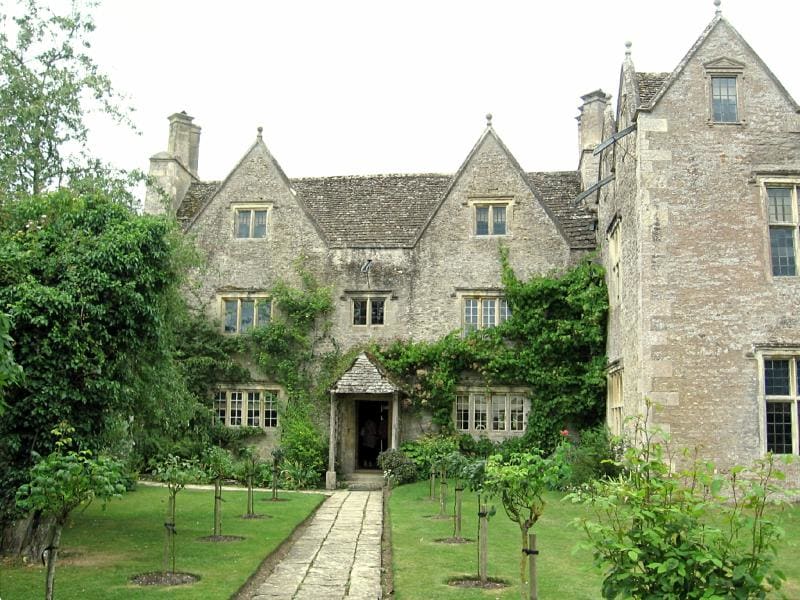
Kemlscott Manor / Rictor Norton & David Allen / CC BY 2.0
Early History
The Kelmscott Manor, originally known as Lower House Farm, was built around 1600 and extended in the 1660s. It was originally occupied by a working local farmer, Thomas Turner, before being passed down in the family for many generations to come. The Turner family remained in the local area as key members of the community well into the 20th century.
Lower House Farm became Kelmscott Manor in 1864, when James Turner purchased 53½ acres of manorial land together with the lordship. James then died in 1870 and the manor was left to his nephew, Charles Hobbs, who let out the property.
William Morris at Kelmscott
William Morris, along with the pre Raphaelite painter Dante Gabriel Rossetti, jointly leased Kelmscott Manor from Charles Hobbs in 1871. Rossetti completed his oil painting Water Willow here that same year. It depicts Willian Morris’ wife, Jane Morris, in the local river landscape, with the manor and Kelmscott Church featured in the background.
Some have suggested that Morris first leased the house to protect the reputation of Jane, who was having an affair with Rossetti. With the affair ended by 1874, Rossetti left the house, and the publisher Frederick Ellis took over as co-tenant. The Morrises would eventually take over the house for just themselves.
William Morris never lived at Kelmscott permanently, however. He used it rather as a country retreat from his busy London life and home in Walthamstow. But he would spend long periods at the manor, especially in the summertime, all the way until his death in 1896.
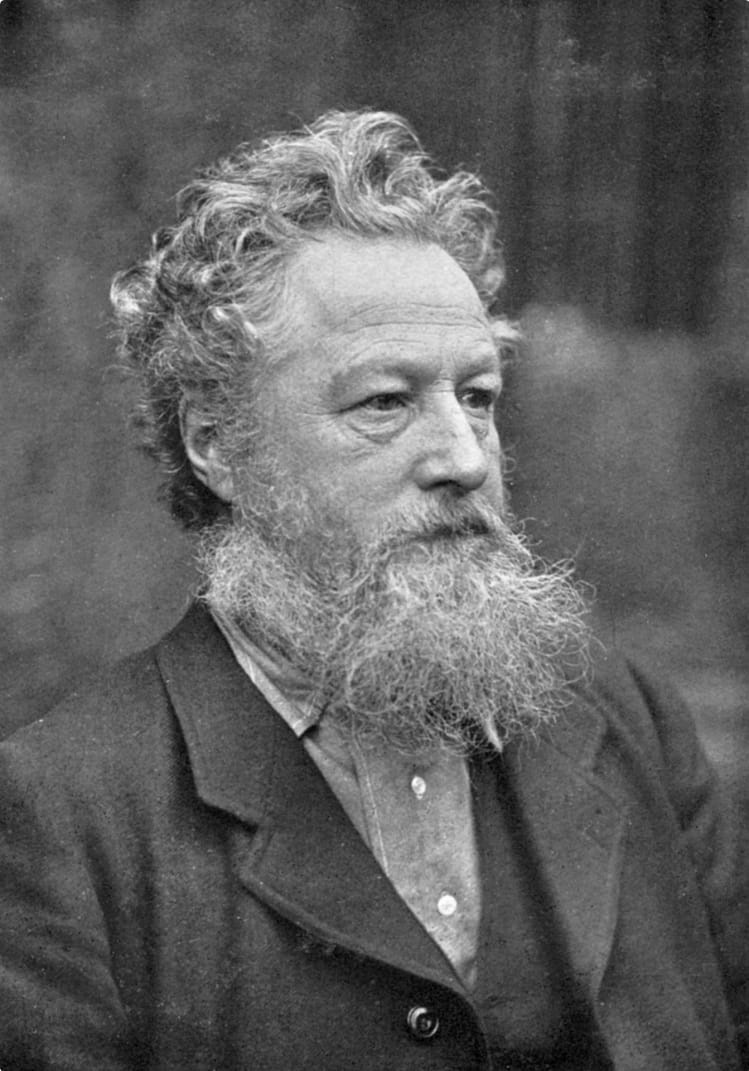
Morris was attracted to the unspoilt and unpretentious authenticity of the manor’s architecture and craftmanship. He believed it to encapsulate the working lives of rural crafts. He felt it so natural in its setting, in harmony with the village and the surrounding countryside, as to be almost organic – the locally quarried stone suggesting walls that had “grown out of the soil”.
The manor and its barns, and the surrounding cottages of neighbours, became a profound source of emotion and artistic inspiration for the artist, textile designer, and poet. Most notably, detailed descriptions of the house and its surroundings are included in his seminal literary work News from Nowhere, published in 1890.
The flora and fauna of the surrounding landscape were also inspiration for many of Morris’s most popular and enduring designs. His classic furnishing textile, “Strawberry Thief”, for example came about after Morris witnessed thrushes steal strawberries outside his manor.
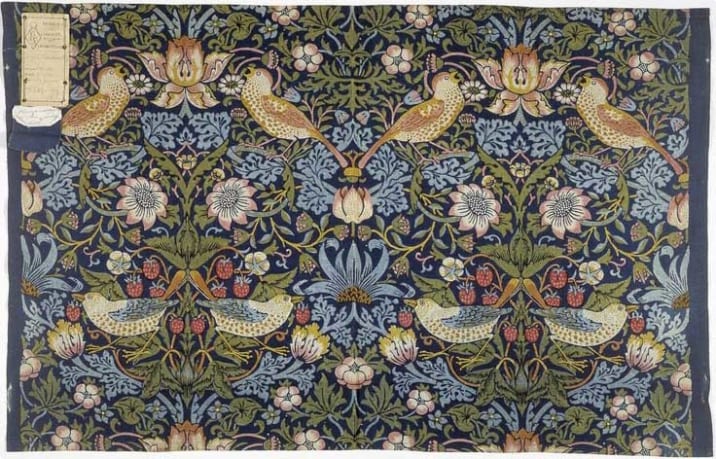
After William Morris
After Morris’s death in 1896, his widow, Jane, continued to occupy the Manor as her principal home, giving up the family’s London Home. She finally purchased the house in 1913, where she remained until her death a year later. At this point, it was inherited by her younger daughter, May.
May moved to the house permanently in 1923, sharing it with her close friend Mary Lobb. May welcomed visitors to the house, and it became a place of pilgrimage for Morris aficionados.
May’s older sister, Jenny, who suffered from the then untreatable epilepsy, died before her, and May had no children of her own. So, she bequeathed the historic house to Oxford University, on the basis that the contents were preserved and the house be used as a scholarly retreat open to the public. May also left the most stringent proscriptions against modernising innovations.
By 1962, the University were no longer willing to preserve the house as a museum piece and so it passed to the Society of Antiquaries of London. The society was able to lift some of May’s conditions, allowing them to restore the then dangerously unsafe roof and carry out essential modernisation in 1964-67.
Refurbishment
The Society of Antiquaries of London recently completed an extensive programme of repair and refurbishment at Kelmscott Manor. This included work undertaken to the structure of the historic house, as well as renovation of the interior, including measures to stop water getting through the brickwork. This was made possible by funds totalling £6m from the National Lottery Heritage Fund and the Kelmscott: Past Present and Future campaign. After two years of work, the farmhouse reopened to the public in April 2022.
Kelmscott retains an impressive collection of the possessions and works of Morris, as well as his family and his Arts & Crafts associates. This includes furniture, original textiles, fabrics, paints, pictures, ceramics, and metalwork. Using inventories, photographs and watercolours, the curator Kathy Haslam and former hon curator Peter Cormack have been able to place the furniture and objects where they were when the Morrises lived there and include the original paint colours and patterns on the walls.
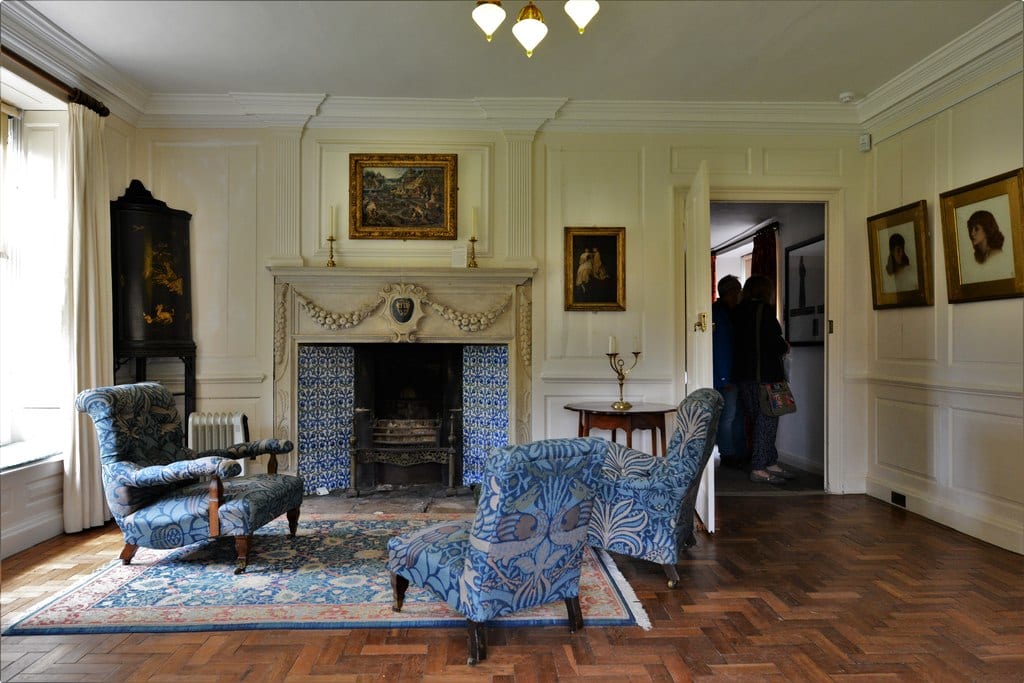
The original wallpapers have been identified and reinstated to several rooms, with the designs individually printed by hand using the original blocks from the Morris & Co archives. A display of Morris’ textile designs can be found in the converted loft, while his bedroom contains many of his original books, and a collection of Albrecht Dürer prints. Further artworks by Rossetti, Sir Edward Burne-Jones, and Pieter Brueghel the Younger are displayed throughout the house.
Kelmscott also features furniture from other Morris homes that arrived after Morris’s death, while Jane and May still occupied the house. The influence of May Morris in particular is evident, as alongside her work as artists, embroiderer, and educator, she was an early curator of Kelmscott’s interiors.
The Kelmscott renovation also includes a new learning centre for schools and community groups that reflects Morris’ strong belief that art and education should be for everyone. The single-storey thatched timber building, designed by Architecton, has been built on the site of a lost, thatched cow byre.
The gardens to the east, north and west of the house were replanted in the 1990s. They include plants know to have inspired Morris, such as roses, fruit trees, and a very old black mulberry at the rear of the house. Two substantial barns (originally for crop storage and stock), and a dovecote and stable close to the house, form an important group of faithfully preserved vernacular buildings.
Kelmscott Manor is open to the public on Wednesdays and Sundays during the summer.
William Morris’s Influence in Adelaide, Australia
William Morris was, by the mid nineteenth century, one of the most influential figures of the Victorian Era in Great Britain. Indeed, during this time, the designs of his decorative arts and furnishings firm – Morris & Co. – were the fashionable choice of Britain‘s middle and upper classes. This was particularly apparent in the growing colony of South Australia, where upper- and middle-class families decorated their homes in the latest fashions from Morris & Co in order to project their cosmopolitanism.
Morris‘s biggest patrons were an Adelaide couple, Robert and Joanna Barr-Smiths, who furnished their seven houses almost exclusively with Morris & Co wallpapers, and had Morris designing tapestries for them as well; the furniture was the shipped all the way from England. The Barr-Smiths influenced the wealthy society circles of Adelaide, who decorated in Morris & Co and built their houses in the emerging Arts and Crafts style.
As early as 1899, the curator of the Art Gallery of South Australia sought to buy some of the Barr-Smiths’ Morris objects; but it wasn’t until 1917 that the first purchase of a tapestry, The Adoration of the Magi, was made from George Brookman. In 1982, the descendants of the Barr-Smiths donated their first Morris & Co. objects, and the Gallery has since developed an extensive collection from local objects and others bought from London. In particular, the Art Gallery of South Australia’s collection includes a number of designs by May Morris, herself one of the leading woman artists of the Arts and Crafts movement.
The William Morris interiors of the Barr-Smiths can also be seen at Auchendarroch House in the Adelaide Hills, a palatial mansion with restored Morris wallpaper and light fixtures, today open to the public as a restaurant and venue space.
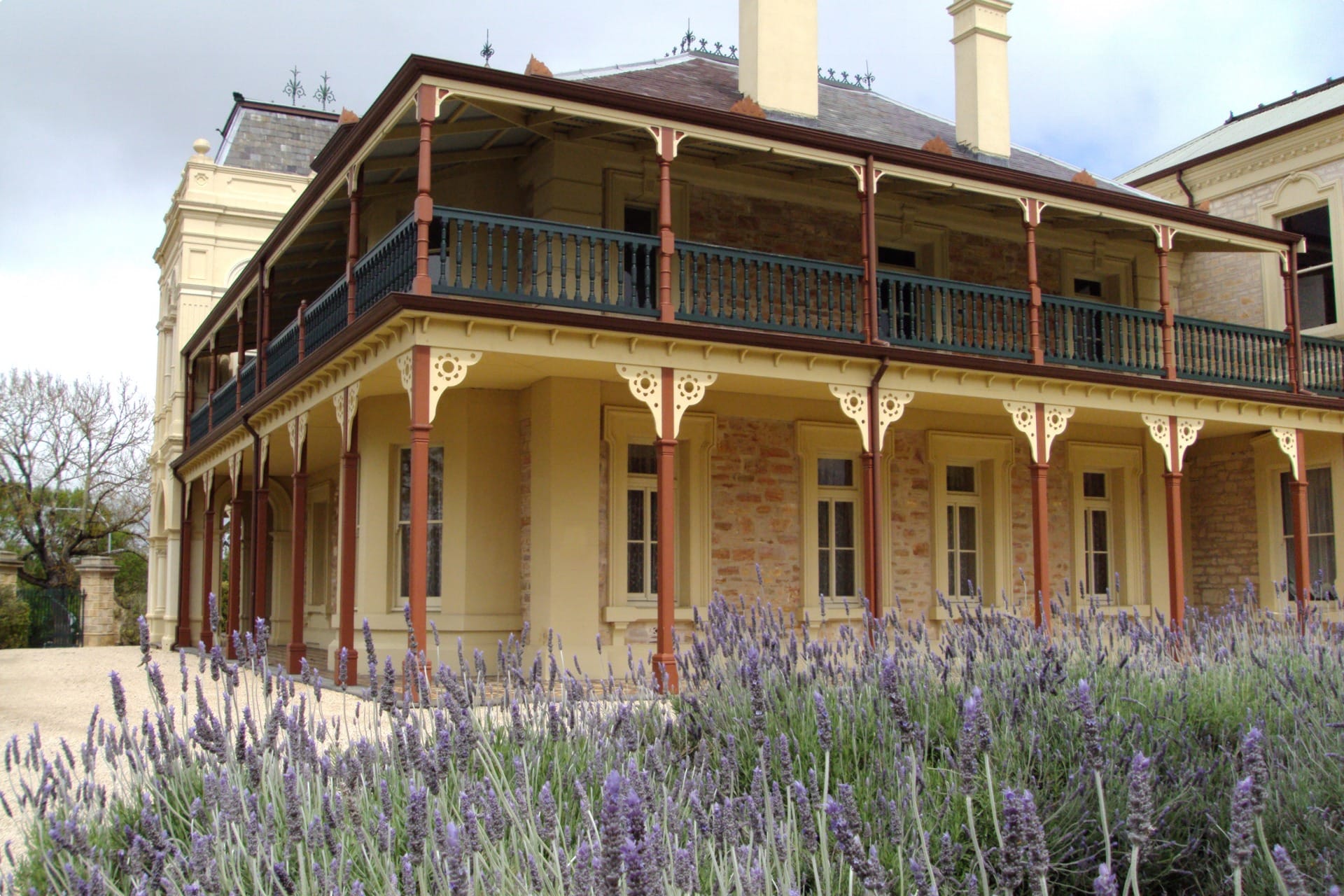
Odyssey Traveller visits Auchendarroch House in the Adelaide Hills, and the Art Gallery of South Australia as part of our tour of Adelaide. Staying in a hotel in Adelaide city for eight nights, our guided tour explores the city centre, visiting the historic North Terrace, Adelaide Gaol, and the Botanic Garden. We also make a walking tour of the museums of Port Adelaide.
Odyssey’s Adelaide tour also explores the surrounding region on a series of day tours. We make a day trip to the Barossa Valley, where we explore the history of German settlement and enjoy a wine tasting and lunch in a local restaurant. We also head down the Fleurieu Peninsula, where we view Kangaroo Island, before stopping in the McLaren Vale Wine Region for lunch and a tasting of the celebrated local wine. Our tour also makes a river cruise down the Murray River, and a trip through the Adelaide Hills. Click here for more information on our Australia tours.
Tour of England’s Villages

You can explore the history of English villages like Kelmscott during Odyssey Traveller’ 18-night England’s villages small group history tour for mature-aged and senior travellers.
This educational small group escorted tour takes you through different eras and across a variety of beautiful landscapes. Professional guides teach you about the history and culture that over centuries has created the Villages of England. Over the period of the program your program leader will take you to places such as east Sussex, Oxfordshire, Gloucestershire, Cotswolds, Yorkshire, Dartmoor Devon and Cornwall.
Packed to the brim with history, culture, and striking scenery, Great Britain and Ireland have a lot to offer the traveller. Our small group tour of England’s villages are perfect for the mature or senior traveller who wants to explore Britain and Ireland as part of an intimate guided tour with an expert local guide. From walking tours of England, Scotland and Ireland to tracing the Industrial revolution, you can explore Britain on a tour with Odyssey. We take in the must-see sights, while nonetheless offering experiences that venture off the beaten path on Odyssey Travellers English village history tour.
This tour for mature aged and senior travellers includes days spent a number of quintessentially English prettiest and oldest places to live in the villages. This collection of English villages visited reflects a range of economic activities, architectural styles and historic influences. From chocolate box thatched cottages, the local parish church, the inn, to the country house built of Cotswold stone, or fishing boats tied up in what are today popular tourist towns in England. This program explores and provides delight in visiting and learning about the history of some of these English countryside villages. This historic small group tour also provides a look at life in castles, a country estate and manor house. Short guided walks and village museums provide interesting insights into village life often dating back to medieval times.
Odyssey Traveller has been serving global travellers since 1983 with educational tours of the history, culture, and architecture of our destinations designed for mature and senior travellers. We specialise in offering small group tours partnering with a local tour guide at each destination to provide a relaxed and comfortable pace and atmosphere that sets us apart from larger tour groups. Tours consist of small groups of between 6 and 12 people and are cost inclusive of all entrances, tipping and majority of meals. For more information, click here, and head to this page to make a booking.
Articles about Britain published by Odyssey Traveller.
- The London Underground
- Victorian Women’s Fashion
- Queen Victoria’s Britain, Part 1 and Part 2
- Understanding British Churches
- Studying Gargoyles and grotesques
- Georgian Architecture
- London’s Victorian Architecture
- The Industrious Revolution in Britain
- 18th Century London
For all the articles Odyssey Traveller has published for mature aged and senior travellers, click through on this link.
External articles to assist you on your visit to Britain
- National Parks UK
- William the Conqueror (History.com)
- Queen Victoria
- The Royal Parks of London
- The Royal Mausoleum
Related Tours
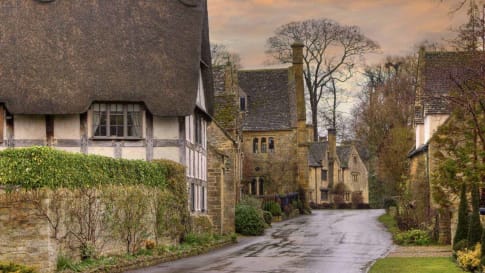
19 days
Jun, SepEngland’s villages small group history tours for mature travellers
Visiting England
Guided tour of the villages of England. The tour leader manages local guides to share their knowledge to give an authentic experience across England. This trip includes the UNESCO World heritage site of Avebury as well as villages in Cornwall, Devon, Dartmoor the border of Wales and the Cotswolds.
From A$16,995 AUD
View Tour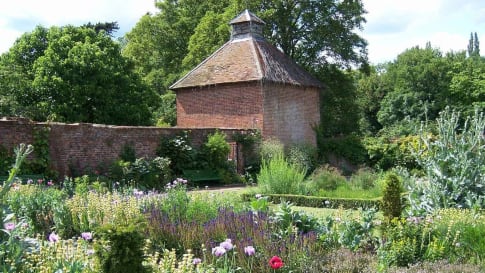
16 days
JunBritish Gardens Small Group Tour including Chatsworth RHS show
Visiting England, Scotland
From A$16,895 AUD
View Tour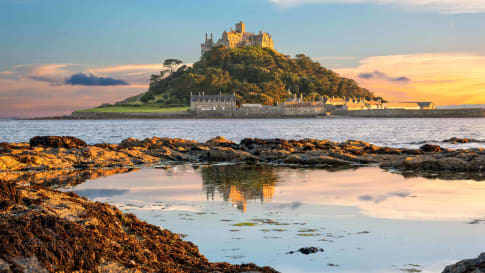
17 days
Sep, AprDevon and Cornwall, England
Visiting England
Our guided small group tour of Devon and Cornwall in England, designed for mature and senior travellers who are travelling with their partner or as a solo traveller. A journey filled with medieval treasures, charming fishing villages in the north Cornish coast, stunning cliff-top coastal views of the blue Atlantic, and atmospheric destinations traditionally linked to the legends of King Arthur.
From A$15,995 AUD
View Tour
22 days
Sep, JunRural Britain | Walking Small Group Tour
Visiting England, Scotland
A walking tour into England, Scotland and Wales provides small group journeys with breathtaking scenery to destinations such as Snowdonia national park , the UNESCO world heritage site Hadrians wall and the lake district. each day tour provides authentic experiences often off the beaten path from our local guides.
From A$15,880 AUD
View Tour
25 days
AugIreland and Lake District walking small group tour
Visiting England, Ireland
A guided small group tour for senior walkers that starts in the capital of Ireland, Dublin. This escorted tour with local guides also explores the Giant's causeway, a UNESCO World heritage site. It transfers from Ireland to Scotland to head to walk in the National park of the Lake district.
From A$14,850 AUD
View TourRelated Articles

British Village Icons: Definitive Guide for Travellers
Icons of the British Villages: Pubs and Cottages The British pub and cottage figure prominently in the image of a (often romanticised) quintessential “British village”. In this article, we will give special attention to these…
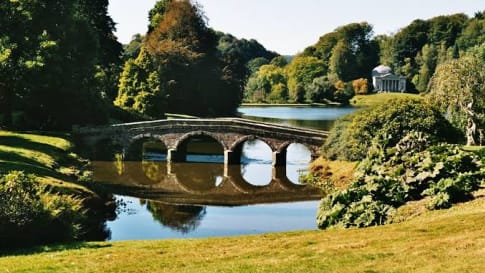
Capability Brown: The English Garden Genius
Article for senior couples and mature solo travellers interested in gardens and design in England and Europe with small group tours of interest.. Brown is regarded as a genius.

Dry Stone Walls: An Alternative History of the British Isles
Throughout the nation, from Yorkshire to Orkney, miles of moss-covered dry stone walls snake their way through the open land. You would be forgiven for not looking twice. However, dry stone walls offer an alternative route into the history of humanity in the British Isles.
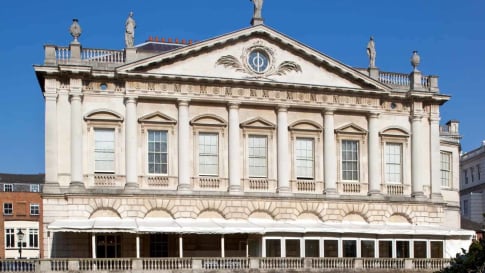
Georgian Style of Architecture: Definitive Guide for Seniors
Article to provide the senior couple or mature solo traveler with an appreciation of the influence of Georgian Architecture in Britain when on a small group educational tour.

London's Victorian Architecture: The Definitive Guide for Travellers
Small group educational tours for senior couples and mature solo travelers with History tours including those examining the Industrial revolution, Victorian Britain the Gilbert and Sullivan era via the D'Oyle Carte family and the cities such as Glasgow, Liverpool and Manchester.

Travellers exploring Glasgow's Architectural Heritage
Article about Glasgow Architectural heritage, led by the Industrial revolution, in Victorian Britain, wealth flowed to Scotland to Glasgow and Edinburgh. See and learn on a small group tour for senior couples or mature solo travelers.

Understanding British Churches: The Definitive Guide for Travellers
British Churches Through the Years “How old is this church?” asks Mary-Ann Ochota in a chapter of her book, Hidden Histories: A Spotter’s Guide to the British Landscape (Francis Lincoln, 2016, p. 250). In this article, we…


